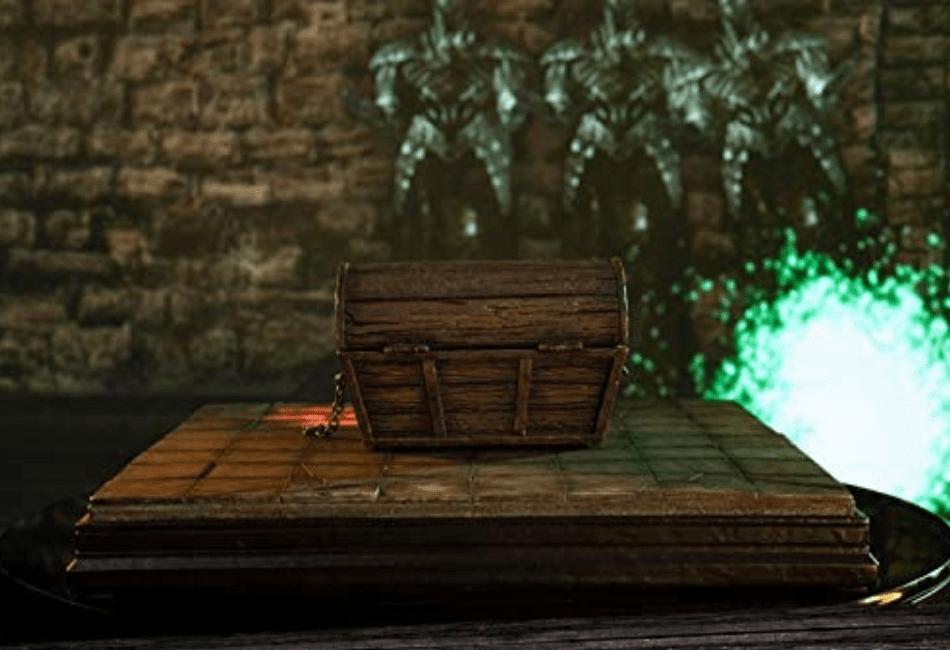A Mimic 5e guide will show you there is more to a Mimic than a false treasure chest. Mimics are unique creatures that don’t get enough credit because they are often put into a box – literally.
My first encounter with a Mimic in D&D 5e was indeed a Mimic that had disguised itself as a treasure chest. Since then, I’ve seen all sorts of furniture, locks, and more. Mimics have come a long way over the last forty years.
Mimic 5e – Snapshot Overview
- AC – 12
- HP – 58 (9d8 +18)
- Speed – 15ft
- Size – Medium
- Alignment – Neutral
- Challenge – 2 (450 XP)
- Skills – Stealth +5, Passive Perception 11
- Immunities – acid, prone
If you are creating a Mimic, this is all you need to know. If you’re a DM who is creating an enemy, you can play around with the stats and abilities as monsters are highly customizable.
Despite popular belief, Mimics can take on the form of any object, but not any creature. Objects are non-sentient things such as tables, rocks, hats, and anything else you can think of.
The Mimic has Darkvision and six abilities. Its actions are Shapechanger, Bite, and Psuedopod, while its passives are Adhesive, False Appearance, and Grappler.
What is a Mimic 5e Dungeons and Dragons?
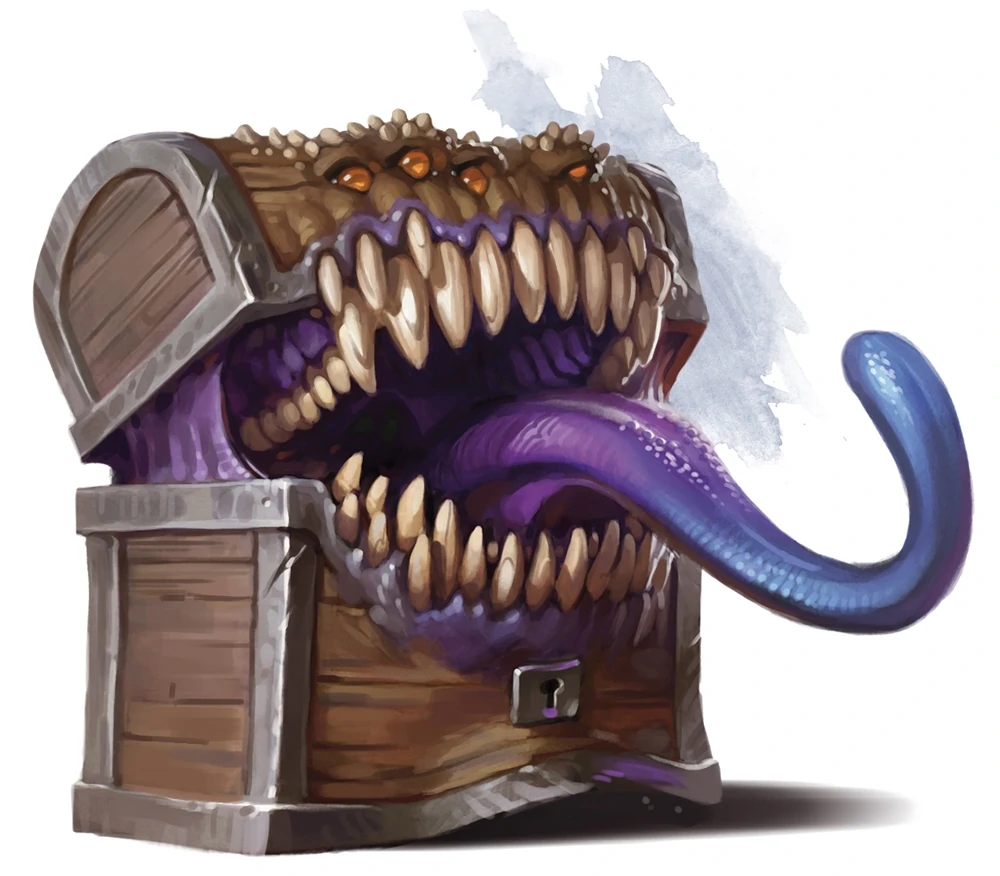
A Mimic is a shapeshifting creature that can take on the form of any object. They are usually predators as they eat meat – which includes the races that player characters choose in their campaign.
A Mimic must take on the form of an inanimate object. It uses these objects to lure in players so that the Mimic may eat the players. They are most often doors and chests but can be any object.
History of the Mimic in Dungeons & Dragons
Unlike many other creatures, the Mimic has been around since 1e. The Mimic has always been a carnivorous creature who loves to live underground. This is common knowledge, but there are things that most DMs don’t tell you.
For example, Mimics usually know Common, Mimic, and Undercommon. So unless the Mimic happens to have extremely low Intelligence, it may be reasoned with via Common, which all adventures speak.
Mimics are also Neutral beings, not Evil beings. There is a common misconception that they are evil. However, they are simply carnivores who are looking for their next meal, just like a Dire Wolf or a Tiger.
Lastly, the average weight for a Mimic is 4,500 pounds, according to Forgotten Realms. This sounds outrageous, but it may be accurate as Mimics’ true form is officially undisclosed.
The Mimic 5e – Base Stats and Ability Scores
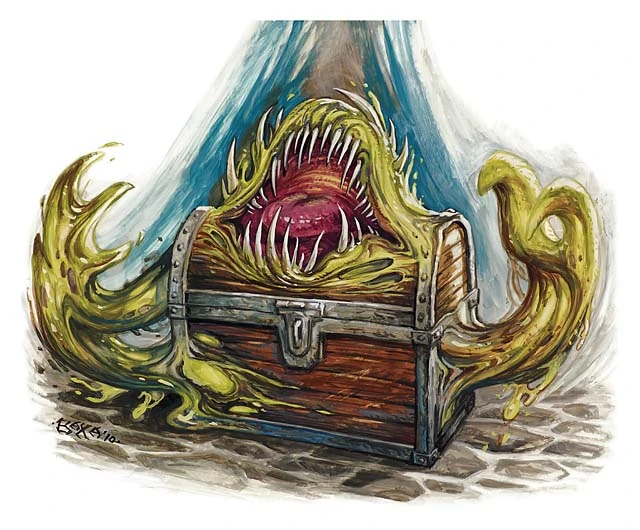
The Mimic is generally an enemy that has set stats and abilities. When you make a Mimic in your campaign, this is what it will have unless you change the default stats to suit your style or your party.
Mimic Ability Scores
- STR – 17 (+3)
- DEX – 12 (+1)
- CON – 15 (+2)
- INT – 5 (-3)
- WIS – 13 (+1)
- CHA – 8 (-1)
Mimics are usually unintelligent creatures with low Charisma. They are strong for their apparent size and adept at using the abilities they are born with. These base ability scores may or may not be changed.
Mimic Stats and Such
- Armor Class – 12 (Natural Armor)
- Hit Points – 58 (9d8+18)
- Speed – 15 ft.
- Skills Stealth – +5
- Damage Immunities – Acid
- Condition Immunities – Prone
- Senses Darkvision – 60 Ft.
- Passive Perception – 11
- Challenge – 2 (450 XP)
Mimics are very slow compared to most creatures, but they are quite stealthy, which makes up for it. Their HP is great for the first couple of campaigns, but after that, it will be quite easy to take on one.
If your party is at a higher level, then a hoard of Mimics can be a great way to spice things up. Choosing a different object for each Mimic in a room full of real objects can be a fun puzzle for players.
Mimic 5e Actions and Passives
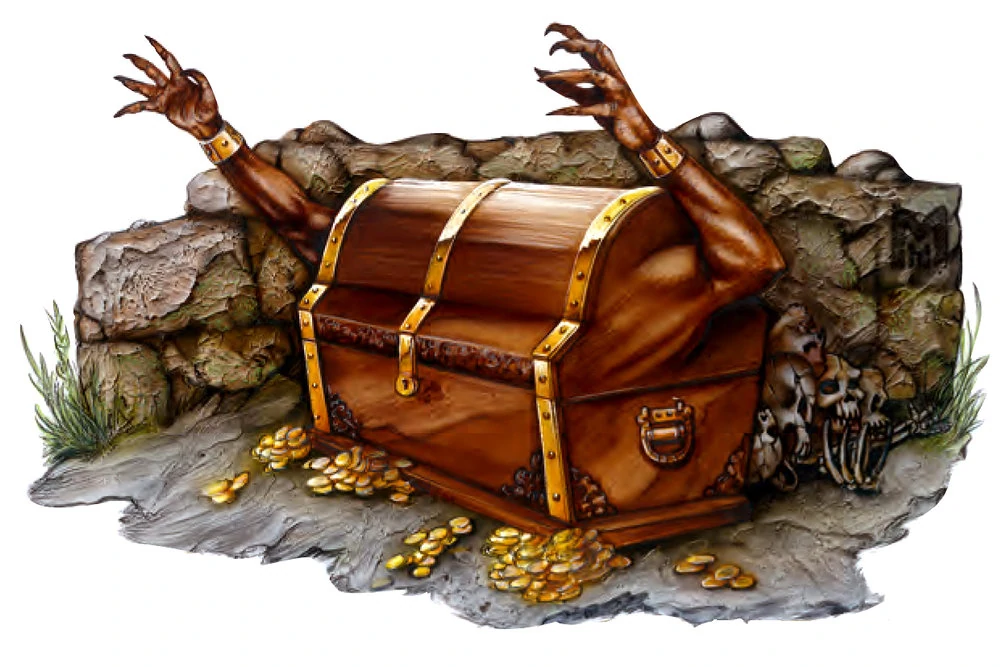
The Mimic has multiple actions and passives in DnD 5e. Some of them are passives that just happen without anything triggering it, while others are attacks that use up an action.
This is everything that the Mimic can do, but feel free to add you’re interesting options.
Shapechanger
Mimics must use their action to polymorph an object. It can also morph into its original form, which is amorphous. This means that it doesn’t have a true, solid form. It is likely a slime-like monster.
When the Mimic dies, it reverts back to its true form. So, whenever it does, you can ask your DM what it looks like. The true form of the Mimic in your world may be different than another world.
Adhesive (Object Form Only)
Mimics can stick to creatures and other objects when in object form. Whenever you touch the Mimic, you will be grappled unless you are larger than Huge. The DC to escape is 13.
If you try to escape, you get a disadvantage in your role. Most of the time, the Mimic won’t adhere to weapons. But a shield may get grappled if it blocks for an extended period.
False Appearance (Object Form Only)
There is generally no way to tell if a Mimic is a Mimic or a real object. If you have a fantastic roll check, then there is a possibility, but it is up to the DM because the Mimic looks exactly like the object it is replicating.
Because the Mimic’s polymorph isn’t a magic ability, detecting magic on it doesn’t work. This makes detecting it or recognizing it for what it is before you touch it nearly impossible.
Grappler
Mimics have an advantage on attack rolls against anything grappled by them. So once it grapples you, get ready to be the target while you are in its grasp. The attacks are more than likely to hit.
Thankfully, others can attack it, and sometimes, abilities will gain an advantage if a party member is grappled by an enemy. So, depending on the party, it could be a good thing.
Pseudopod
Pseudopod is an attack move that is a +5 to hit, has a reach of 5 ft., and can only hit one target. When it does hit, it does either a flat 7 bludgeoning damage or 1d8 + 3 damage.
The visual of this ability is unknown, but the name may give it away. Pseudopod is a protrusion, so the attack likely morphs part of the Mimic out into a Flubber-like arm that hits the enemy.
Bite
This is another simple attack that has a +5 to hit, a reach of 5 ft., and can only attack one target. When it does hit, it does 7 or 1d8 + 3 piercing damage. However, this attack is stronger than the former.
It also adds either 4 or 1d8 acid damage. If you’re immune to acid damage, then this won’t affect you. But since it could double in damage to vulnerable targets, it’s one to be afraid of.
Creating a Mimicas a Player
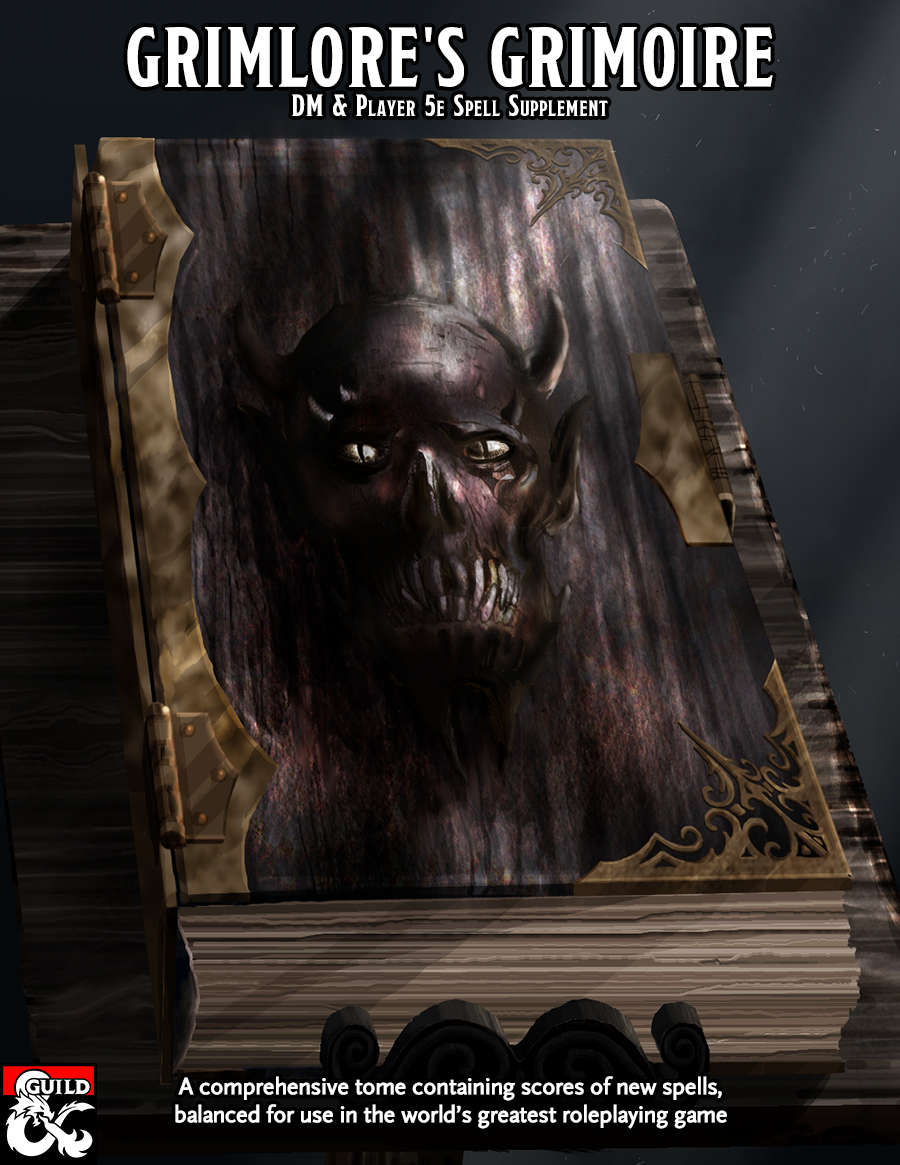
The ability to create a Mimic is not possible in the original rules unless you use something like Wish. However, a few adaptions have been created that allow spellcasters to do so.
Two examples of Mimic Creation are found in Grimlore’s Grimoire, and the other is a Kickstarter set that I don’t believe reached its goal. However, you can probably come up with a plan with the DM to create your Mimic.
Why Mimics Don’t Change Into Something Menacing
The whole strategy of the Mimic is to lure players in – hence the default treasure chest form. It doesn’t do so because it’s just a jerk; it does so because it is hungry and wants to eat you.
If it appeared as a Beholder, you’d probably stay far away from it or kill it from afar. But if it is something that you wouldn’t think twice about touching, it can lead to a grapple and – hopefully – consume you in seconds.
Mimic Ideas for a DM
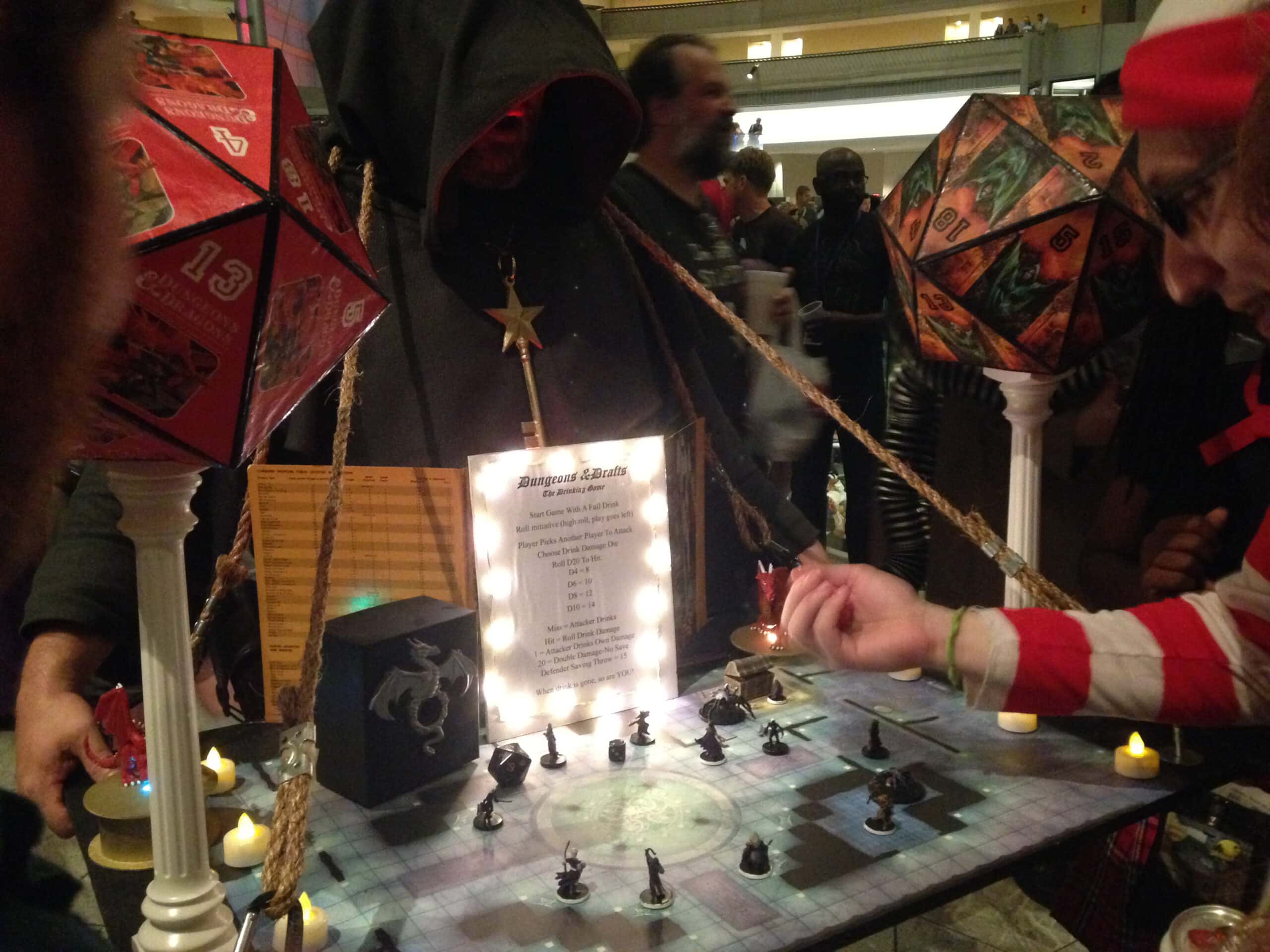
Creating a Mimic that isn’t a dungeon chest doesn’t always come naturally. There are hundreds of ways to make Mimics more interesting. The best way is to make something you’ve never seen before. But if you’re in a pinch, try my original ideas.
The Intelligent Mimic
Most Mimics are nearly impossible to reason with because they aren’t very smart. If a DM decided to create a Mimic with double the original Intelligence, players could talk to it.
The possibilities are endless with this. You could bargain with it, entertain it, and more. Mimics usually speak Common, so you don’t need any special language to communicate.
The True Form Mimic
Mimics are almost always found as objects. But what if you caught the Mimic with its pants down and it hadn’t transformed yet. This could be a hilarious way for players not to know what they were up against.
Imagine the Mimic panic and transform into a combination of a few different objects during its first turn.
The Mimic Sidekick
This Mimic has either made a conscious choice to join the fight for good, or it was persuaded by a charming party member. It can help out the party any way it sees fit while being carried in the backpack as an object.
The Mimic Bard
Mimics are naturally uncharismatic. But since the Mimic can transform into a musical instrument, wouldn’t it make sense that it could also play that instrument as if moving its arms?
Unless, of course, the strings are more like hair. In that case, it would use its “limbs” to morph the body and play the strings. Either way, I’d love for a DM to make this happen.
The Mimic House
A Mimic house is 100% possible. Mimics aren’t always the same size, so there’s no reason one can’t decide to transform into a house. Your party could walk into a house full of objects.
Depending on what the DM decides, the entire house could be the Mimic, or each object could be a different Mimic.
The Mimic Organ Trader
If a Mimic wanted unlimited food while still living by the law, it could sell its body parts or sections. The secretions are like glue, and the skin of the Mimic is useful in spellcasting.
These each sells for around 5gp each, depending on the region. The Mimic could trade the parts for livestock, prisoners, etc. “Welcome. Would you like to browse my wares?”
FAQs
Question: What is a Mimic’s True Form?
Answer: The Mimic is described as an amorphous creature. This means that it doesn’t have a solid form. I always imagine it as an ooze creature that is very similar to Ditto from Pokémon.
Question: Can a Mimic Be Anything in 5e?
Answer: No. Mimics can only turn into objects. They must turn into inanimate objects as well. This means that it cannot turn into another creature, although I’m not sure what an animate object would be.
Question: Can Mimics Reproduce in DnD?
Answer: Mimics reproduce by splitting into two. As far as I know, they grow from there. So one Mimic will turn into two adolescent Mimics or three baby Mimics, perhaps. They then grow and keep reproducing.
Question: Why Are Mimics Always Alone?
Answer: Mimics aren’t against being with other Mimics, but most of the time, they are alone. They likely do this because finding food is easier when you can quietly lure in one person at a time.
Mimic Significance in D&D 5e
There are only a few creatures that non-D&D players may recognize. We have the Beholder and the Bugbear, but the Mimic may be the most famous of all – the animated treasure chest that eats adventures.
The Mimic is one of the most common first encounters because it is fairly easy for a party to take one down together. While a level 1 party may suffer a loss, it only takes a level or two for the Mimic to be old news.
What I love about the Mimic is that it has become such a poster child for D&D monsters that it is now seen everywhere. From RPGs to TCGs, the Mimic is making an appearance across the multiverse, and it all started with a chest in the 1970s.
- Augury 5e Guide – The Vaguest and Coolest Cleric Spell - September 5, 2022
- Roc 5e Guide – The Big, Dumb Bird You Don’t Want To See - September 5, 2022
- Best Drow Name Ideas – From Alvin to Sânziana - August 30, 2022

